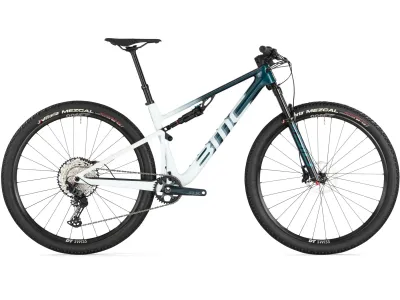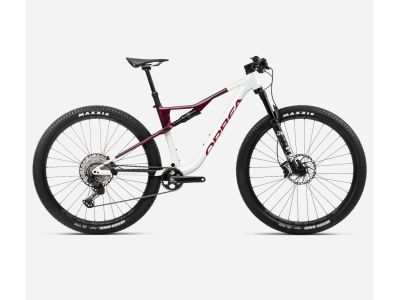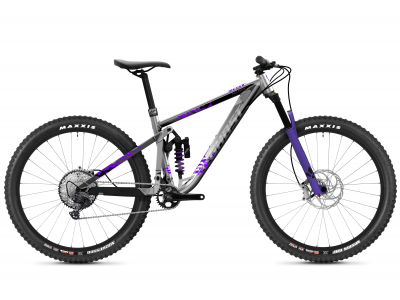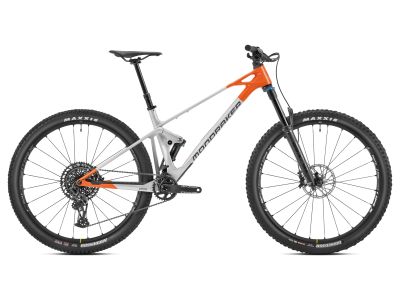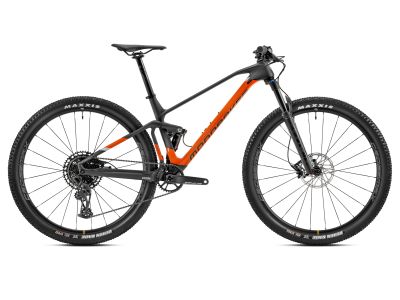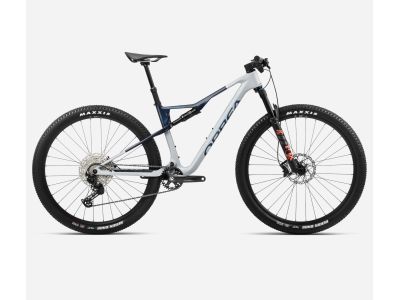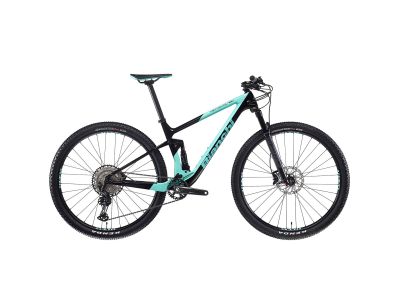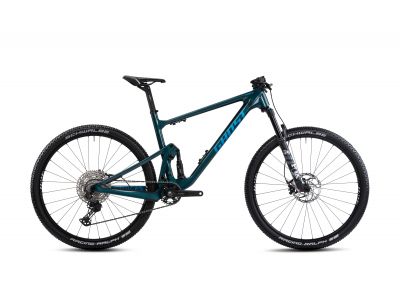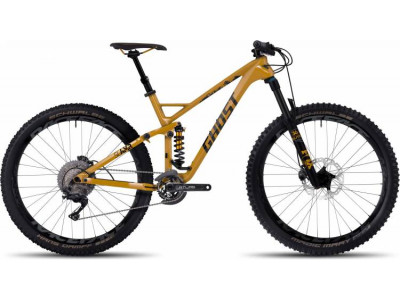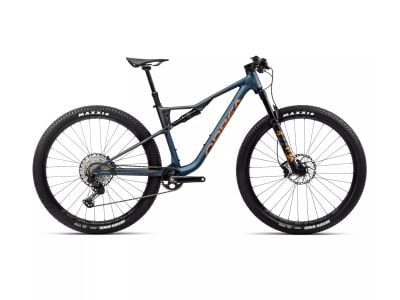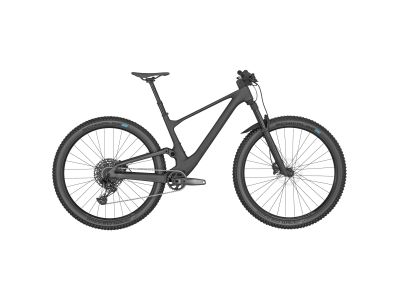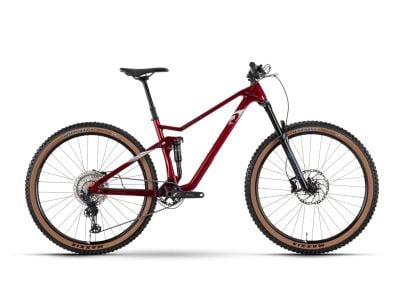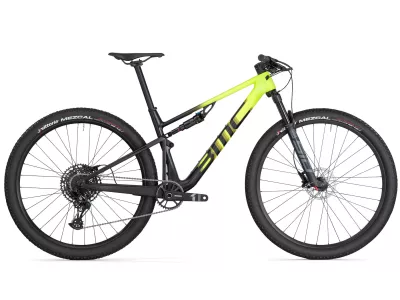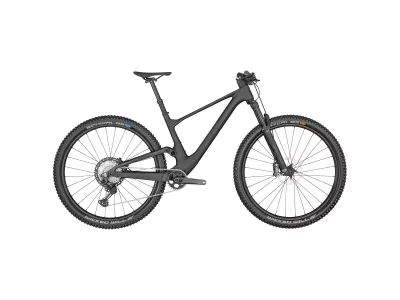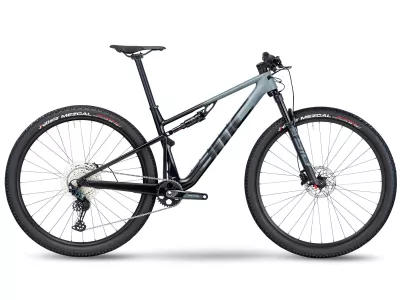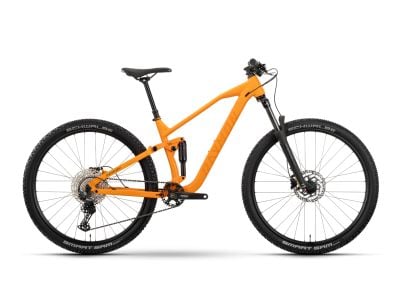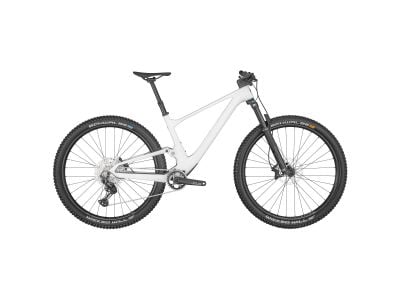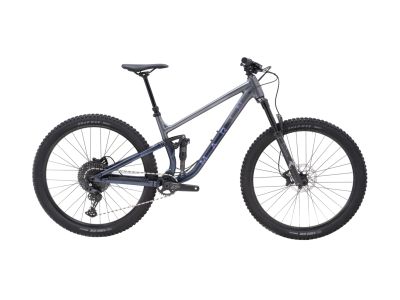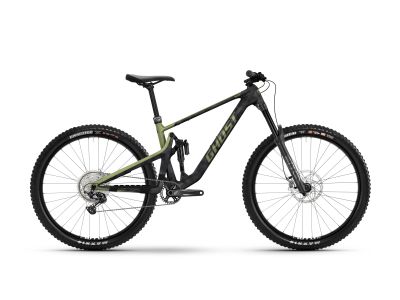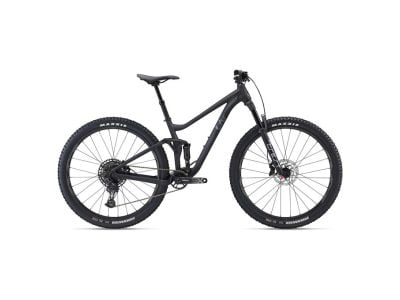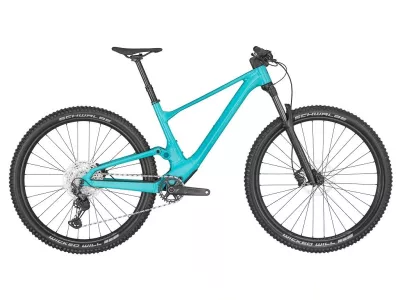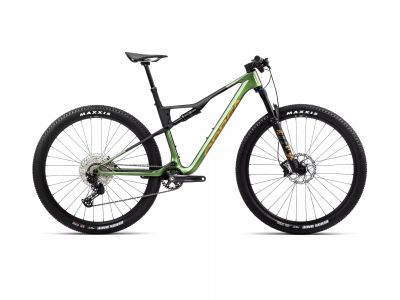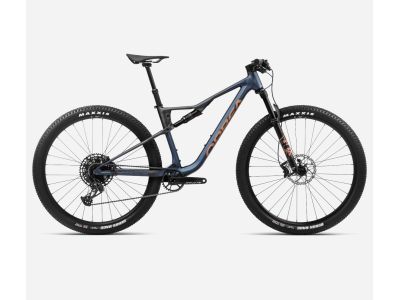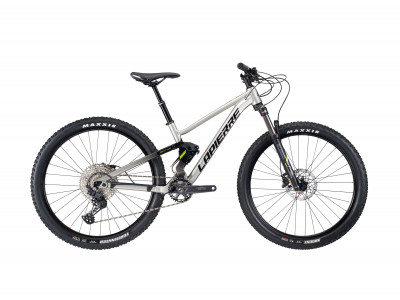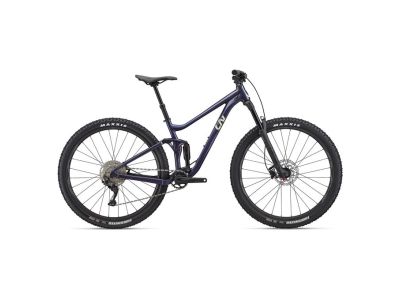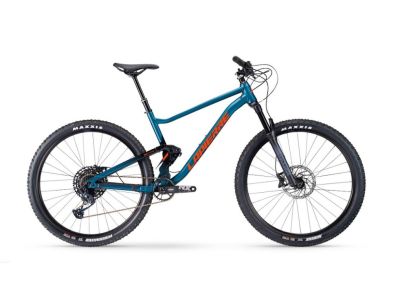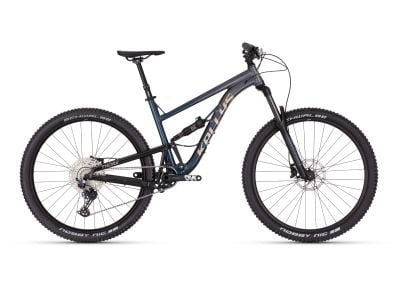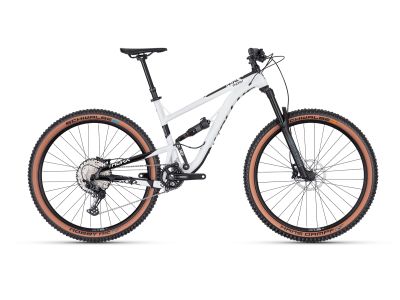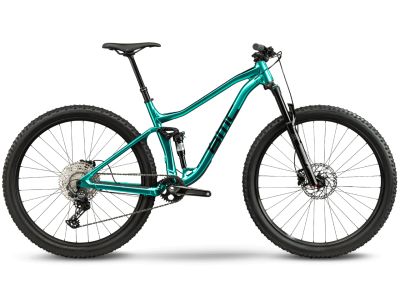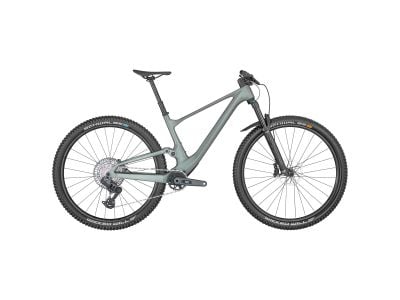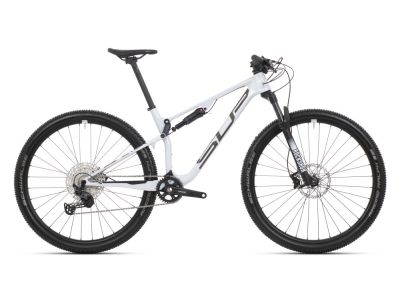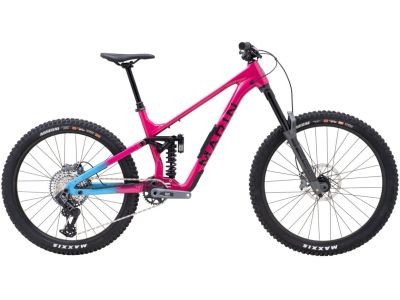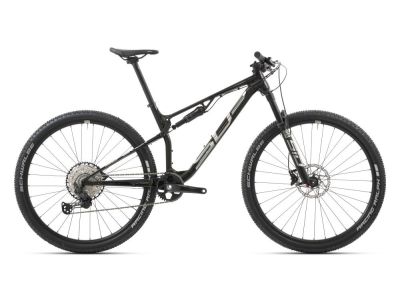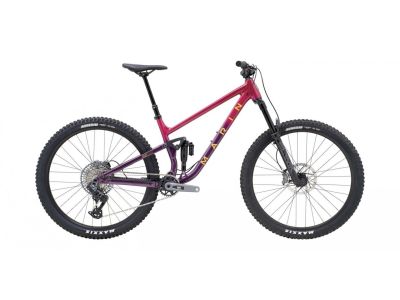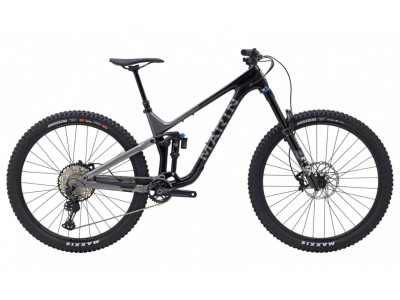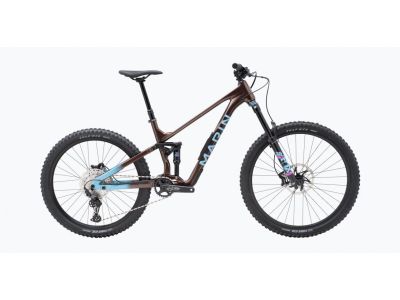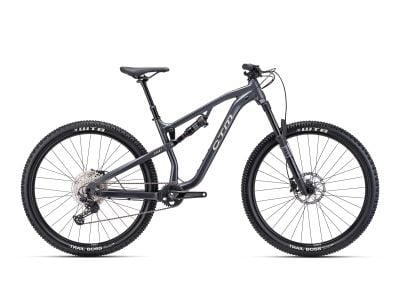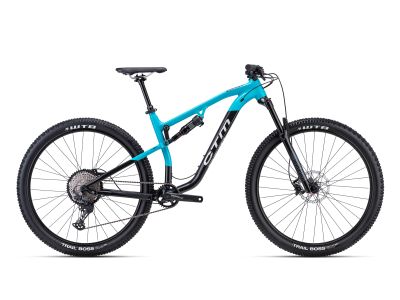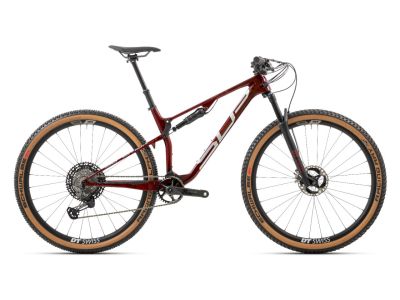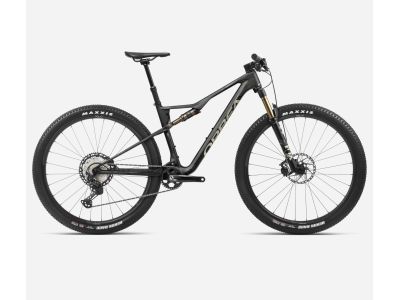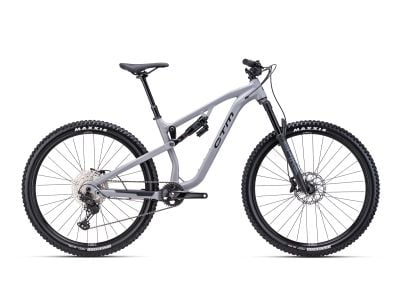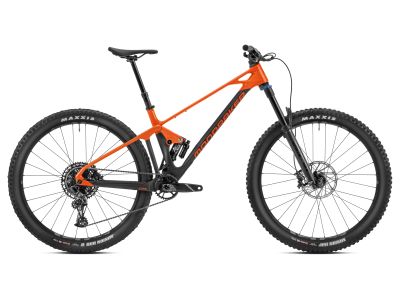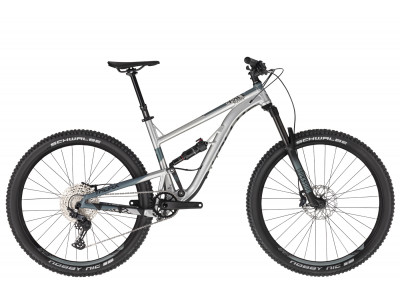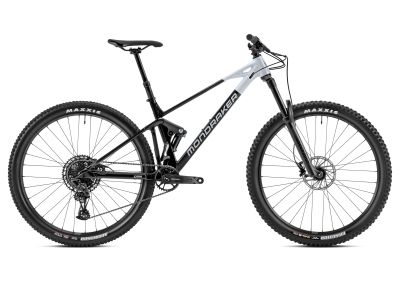A full-suspension mountain bike, often referred to as "full", is a specialized type of bike designed for off-road riding, especially in rugged and uneven terrain, on forest trails, in bike parks. These mountain bikes are designed to provide riders with greater comfort, control, and traction when overcoming difficult and technical terrain.
- Cross-country (100 - 120 mm), usually lightweight and have less suspension travel to maximize pedalling efficiency. Steeper geometry for efficient climbing.
- Trail (120 - 150 mm), medium suspension travel and designed to balance climbing and descending characteristics. The geometry is ideally tuned for comfort and control.
- All mountain (140 - 160 mm), designed for cyclists who want to tackle varied and challenging terrain.
- Enduro (150 - 180 mm), designed for aggressive, technical descents and races, often over challenging terrain.
- Downhill and freeride (190 mm and above), designed for extremely steep and technical terrain. Have the largest suspension travel to handle big drops and uneven terrain. Typically come with a double-crown fork and robust components for maximum stability and control.
Why is a full suspension bike better?
There are several reasons why it makes sense to choose a full-suspension mountain bike:
- Greater comfort: Full-suspension bikes are designed with a front and rear suspension system that cushions the bumps and bumps that occur during off-road riding. The result can be a smoother and more comfortable ride, especially on uneven or technical terrain.
- Better traction and handling: Suspension systems on full-suspension bikes help keep the tires in contact with the ground, improving traction and handling. This can be especially beneficial when overcoming difficult terrain such as loose rocks or roots.
- Better stability: The combination of front and rear suspension allows for better stability, especially when descending steep or technical routes. The suspension helps absorb shocks and maintain control, giving riders more confidence and stability in challenging situations.
- Less fatigue: Because full-suspension bikes absorb most of the shock and vibration from uneven terrain, they can help reduce fatigue on longer rides. This can allow riders to maintain better control and stamina, making it easier to cover longer distances or more challenging routes.
- Versatility: Full-suspension bikes are versatile and suitable for a variety of terrains, including cross-country trails, downhill and technical single track. They handle a wide range of riding styles and offer the flexibility to tackle different types of trails and terrain.
It is important to note that full suspension bikes tend to be more expensive and heavier than hardtail bikes (front suspension only). Additionally, they may require more maintenance due to additional suspension components. Ultimately, choosing between a full-suspension bike and a hardtail depends on your riding style, preferences, and budget.
How to pick a full suspension bike?
There are several key factors to consider when choosing a full suspension mountain bike:
- Cycling style: Determine your preferred cycling style, whether it's cross-country, trail riding, downhill, or all-mountain. Different bikes are designed for specific purposes, so pick one that suits your cycling preferences.
- Frame material: Full suspension mountain bikes are commonly made from aluminium or carbon fibre. Each material has its own specific properties in terms of weight, strength and ride quality. When selecting a frame material, consider your budget and desired driving characteristics.
- Suspension travel: Suspension travel is the distance that the front and rear suspension systems can compress. It affects how well the bike absorbs shocks and how it behaves on different terrains. Longer travel bikes are usually better suited for more aggressive riding, while shorter travel bikes excel in smoother, faster conditions.
- Wheel size: Full-suspension bikes come in a variety of wheel sizes, including 26-inch, 27.5-inch (650b), and 29-inch. Each wheel size has its advantages and disadvantages when it comes to handling, traction, and rolling efficiency. When choosing a wheel size, consider your riding style and personal requirements. Picking a wheel size is a complex matter, so read our article: From the basics: 29, 27.5 or 26'' - MTB and the appropriate wheel size.
- Budget: Determine your budget for a full-suspension mountain bike. Prices can vary significantly depending on brand, components, and materials used. It is important to find a bike that offers good value for money without compromising on quality.
What are the maintenance requirements for full suspension bikes?
Like any bicycle, full suspension mountain bikes require regular maintenance to ensure optimal performance and longevity. Here are some maintenance instructions:
- Suspension fork and rear shock: Regularly check and adjust the air pressure, rebound, and compression of the suspension components according to the manufacturer's recommendations. This will help maintain proper performance and response.
- Bearings and pivots: Full-suspension bikes have various pivot points and bearings that may require lubrication and regular wear checks. Keep these components clean to ensure they function properly.
- Frame and components: Check the frame and components regularly for signs of damage or wear. Clean the bike after every ride and pay attention to the drive train, brakes, and suspension components. Replace worn parts immediately to maintain safety and performance.
- Tire pressure and tread: Regularly check and adjust tire pressure to optimize traction and rolling resistance. Check tread wear and replace tires if necessary.
